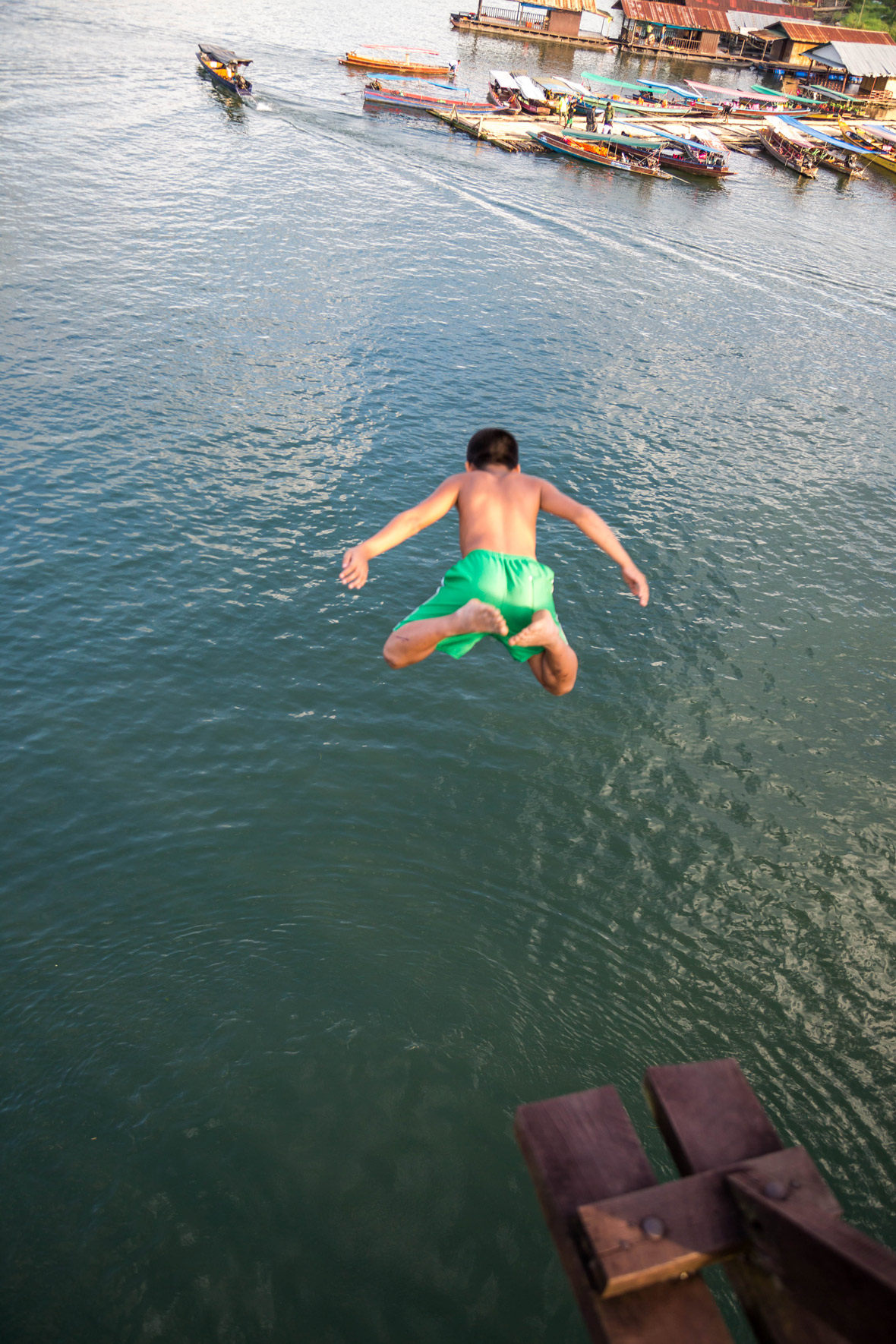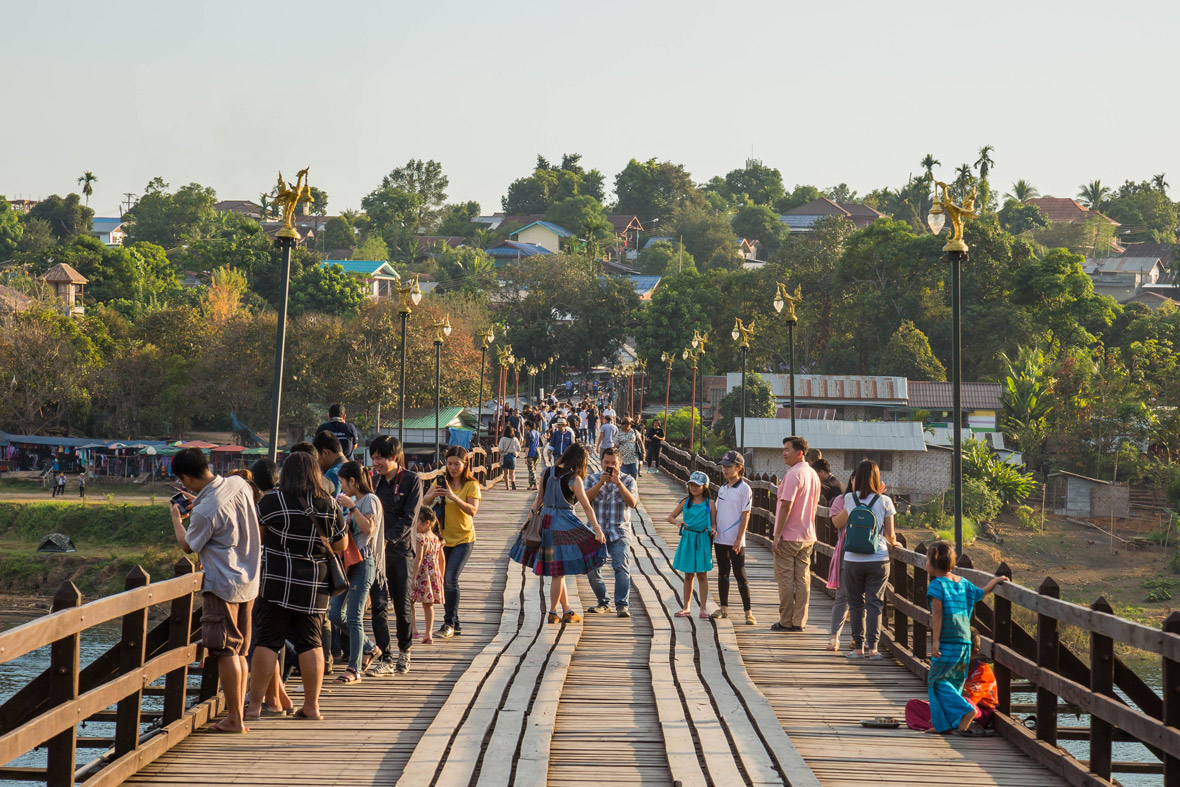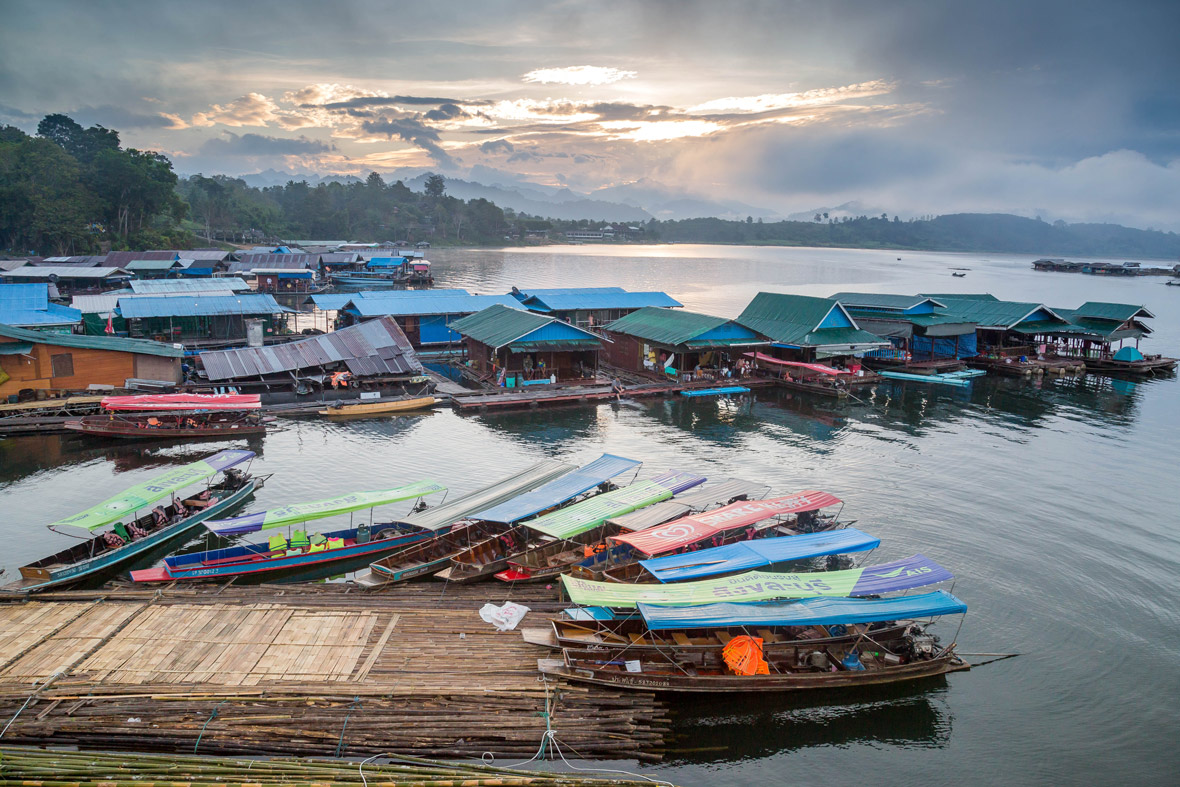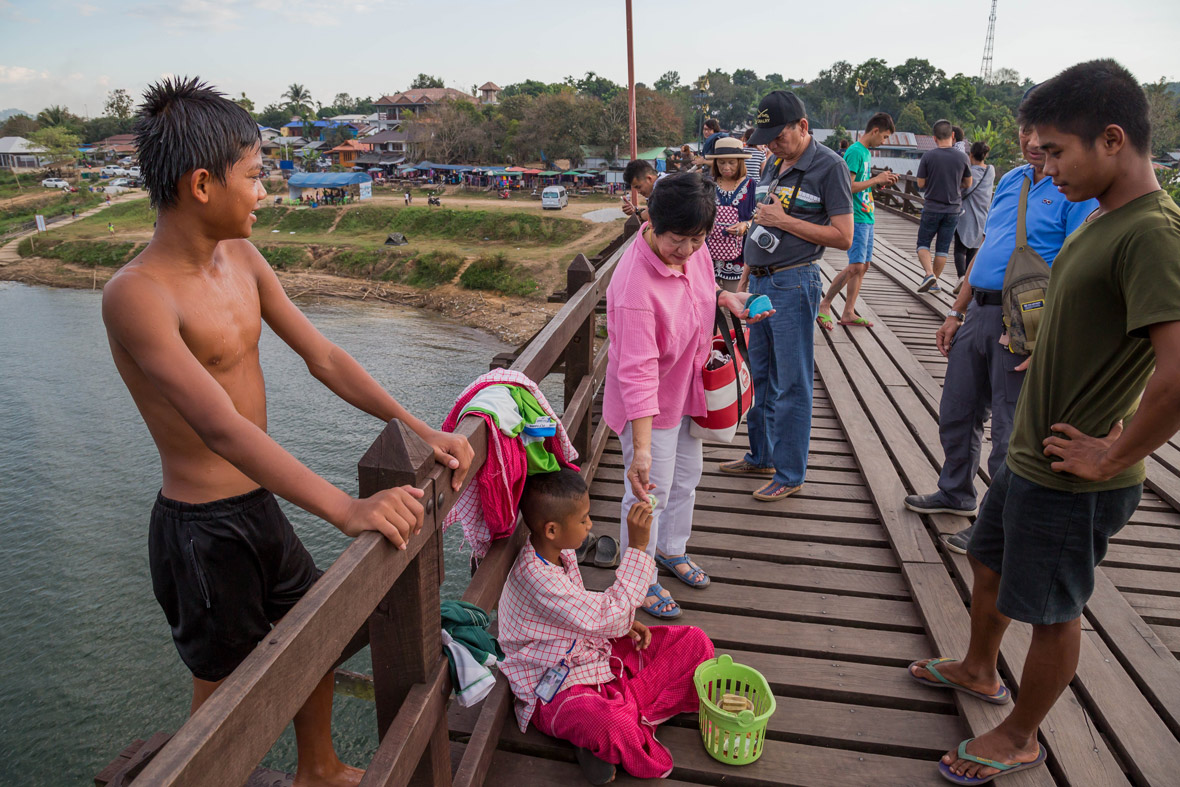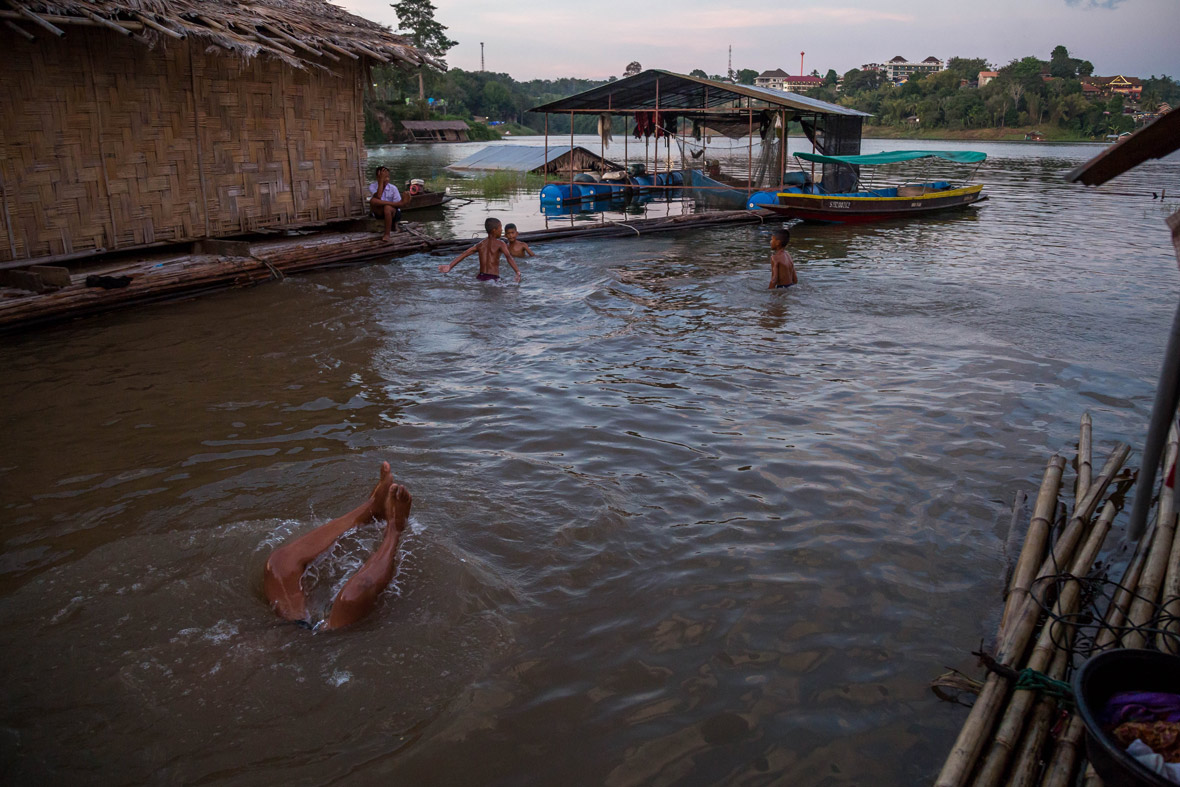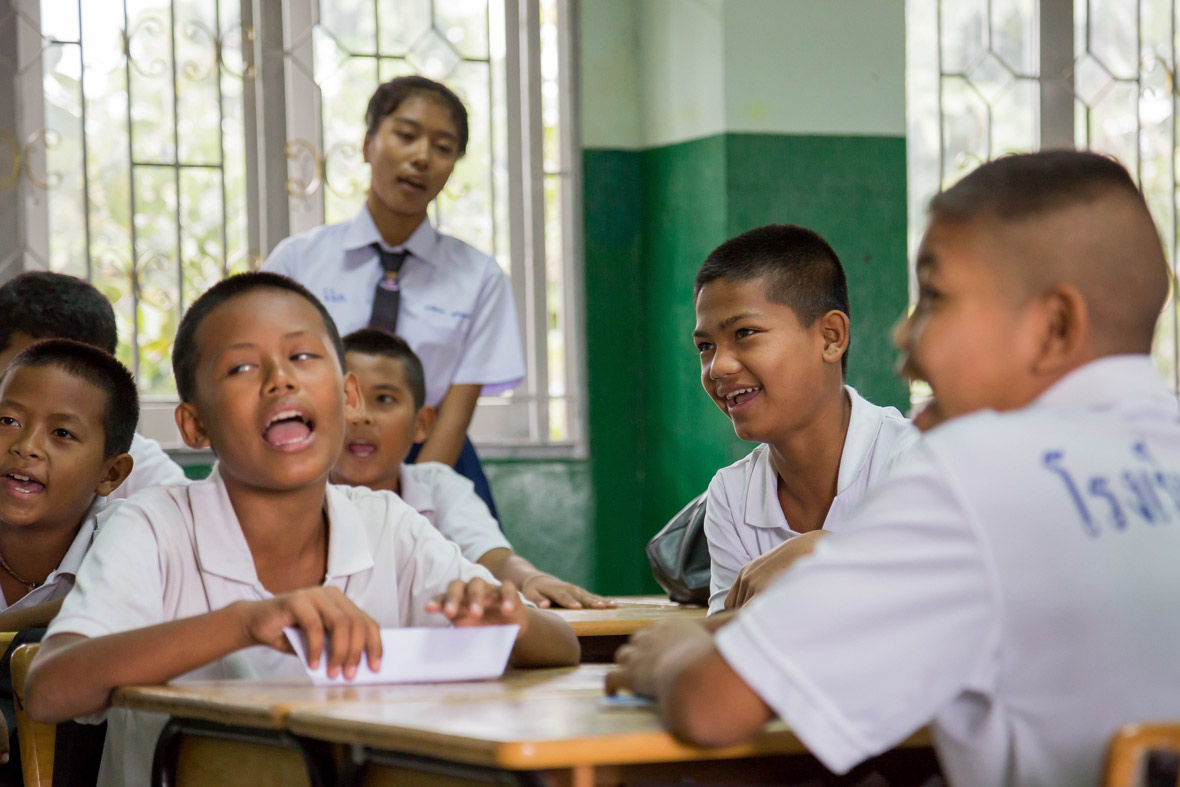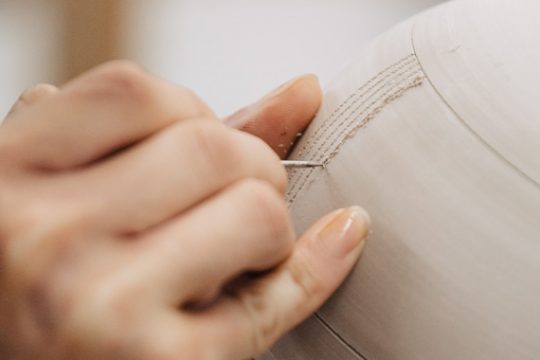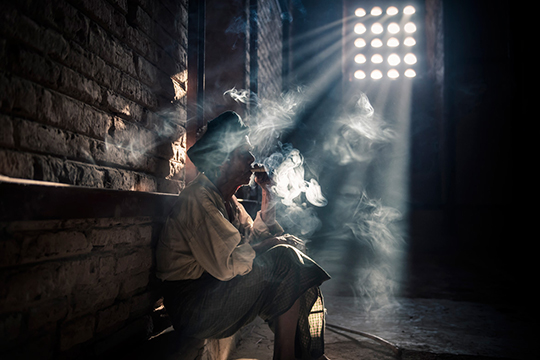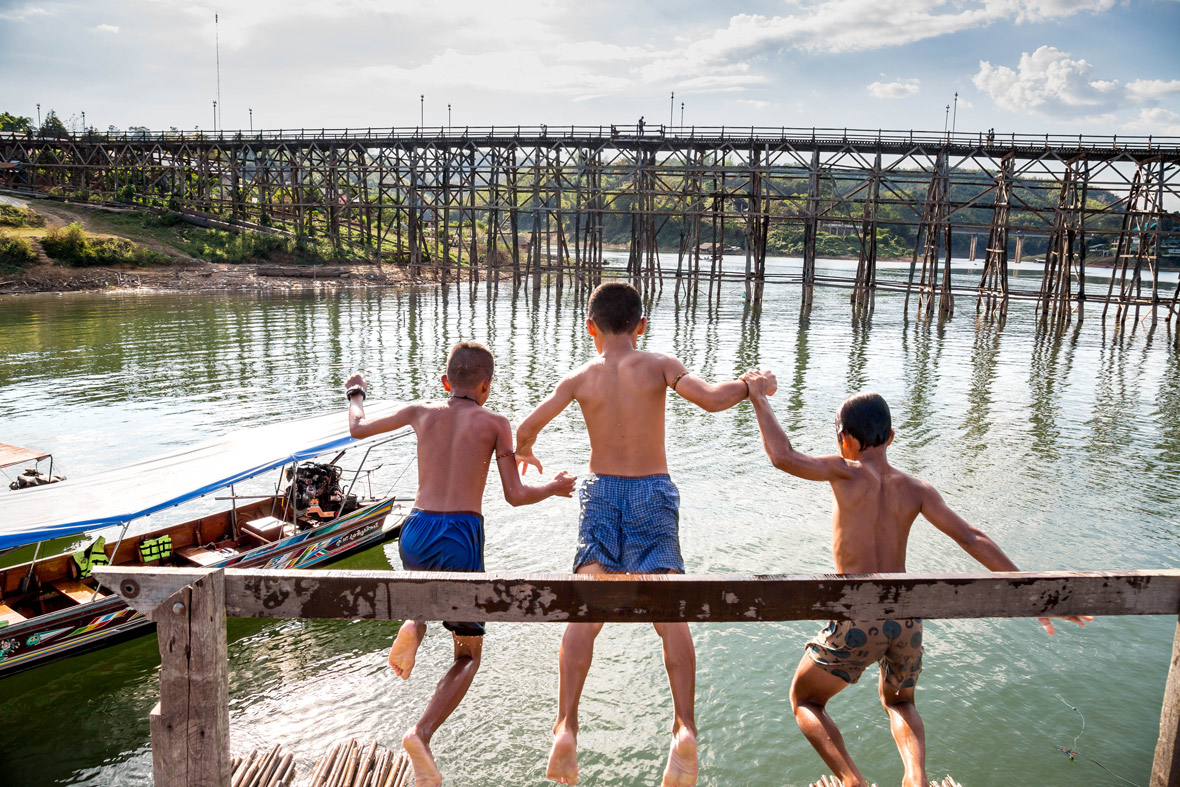
Sangkhla Buri, a small town in the western Thai province of Kanchanaburi, has recently become a popular destination for local and foreign tourists. Its iconic Uttamanusorn Bridge lays claim to being the longest wooden bridge in Thailand, and it draws crowds for the groups of young boys who take turns diving into the water below.
Sangkhla Buri 是位于泰国西部省份北碧府的一个小镇,最近,这里成为了一个吸引众多当地和外国游客的热门旅游目的地。这里有一座著名的地标 Uttamanusorn 大桥,据说是泰国最长的木桥,成群结队的年轻男孩为此而来,进行着跳水表演。
Divers are between eight and fifteen, and they typically work the bridge in small groups. One boy might beckon tourists, while another performs the actual dives. They don’t explicitly ask for money, but there’s an unspoken expectation that some baht will change hands. Tourists snap pictures of the dive, and sometimes even ask the boys to jump over and over again until they get a perfect shot.
这些跳水的男孩年龄大都落在 8 岁到 15 岁之间,他们通常是以团体形式一起工作。一名男孩负责招来游客,另一名男孩则负责跳水。他们不会明确地向游客要钱,但却怀抱着心照不宣的期望,希望游客多少能留下一点小费。游客们在一旁拍下男孩跳水的照片,有时候甚至会要求男孩一遍又一遍地跳水,直到他们拍到满意的照片为止。
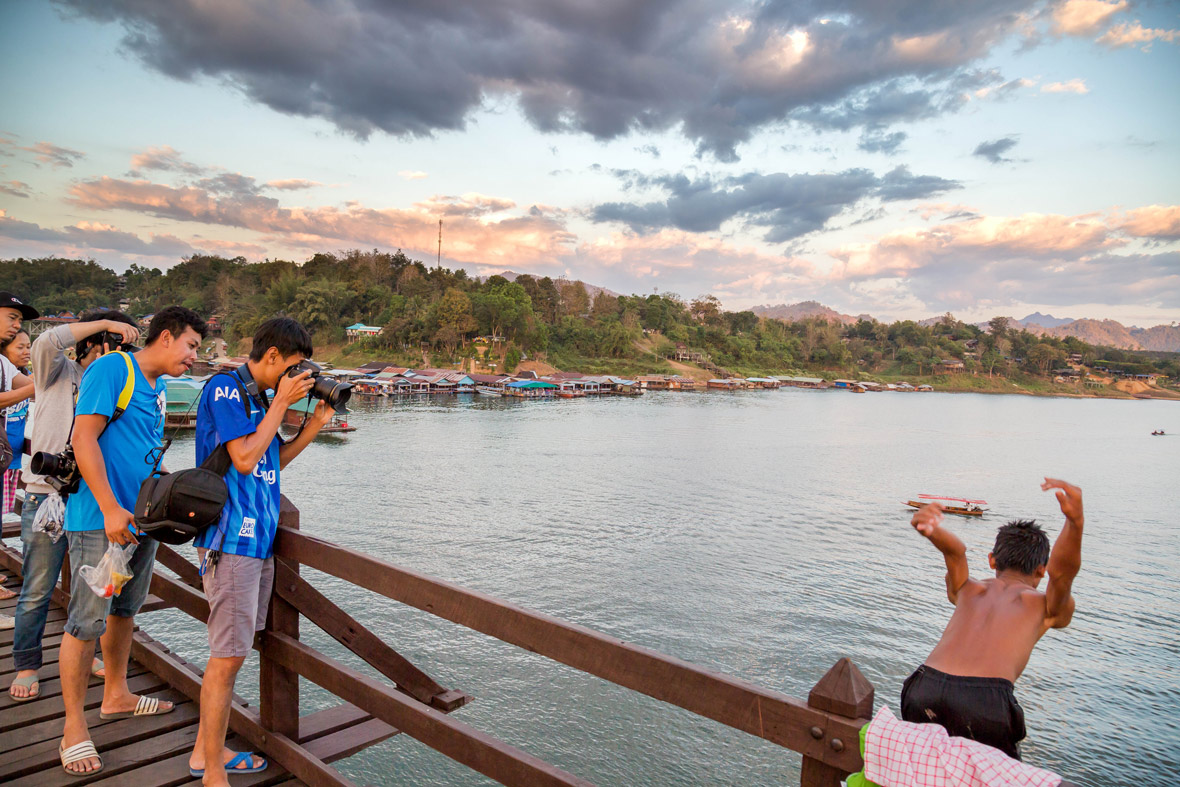
Ye Te Su is a 13-year-old who spends his weekends making money as a diver. He’s been performing on the bridge since he was 10, having learned from his older friends. Despite a lack of professional training or safety equipment, Ye has fortunately never suffered any injuries diving.
13岁的 Ye Te Su 会在周末专门表演跳水来挣钱。他从10岁就开始在桥上表演,跟着年长一些的朋友学习跳水。尽管缺乏专业训练或安全设备,幸运的是,他从来没有受过伤。
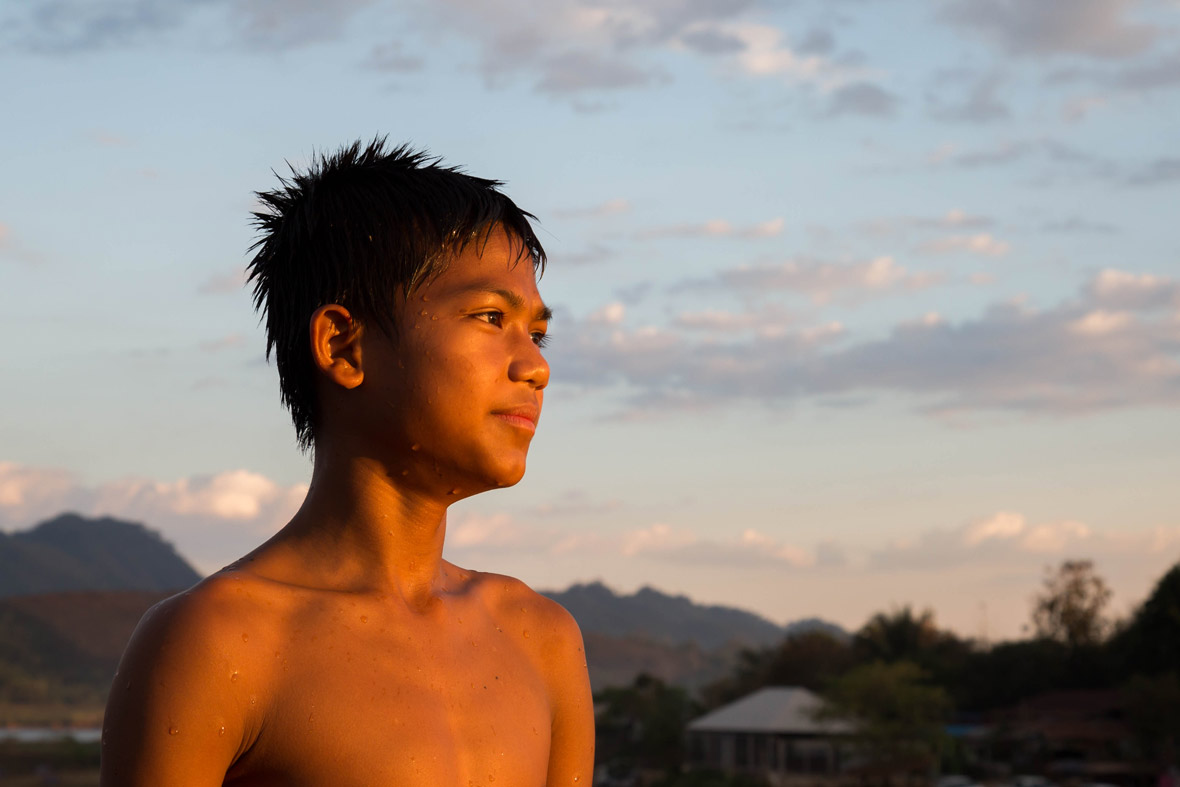
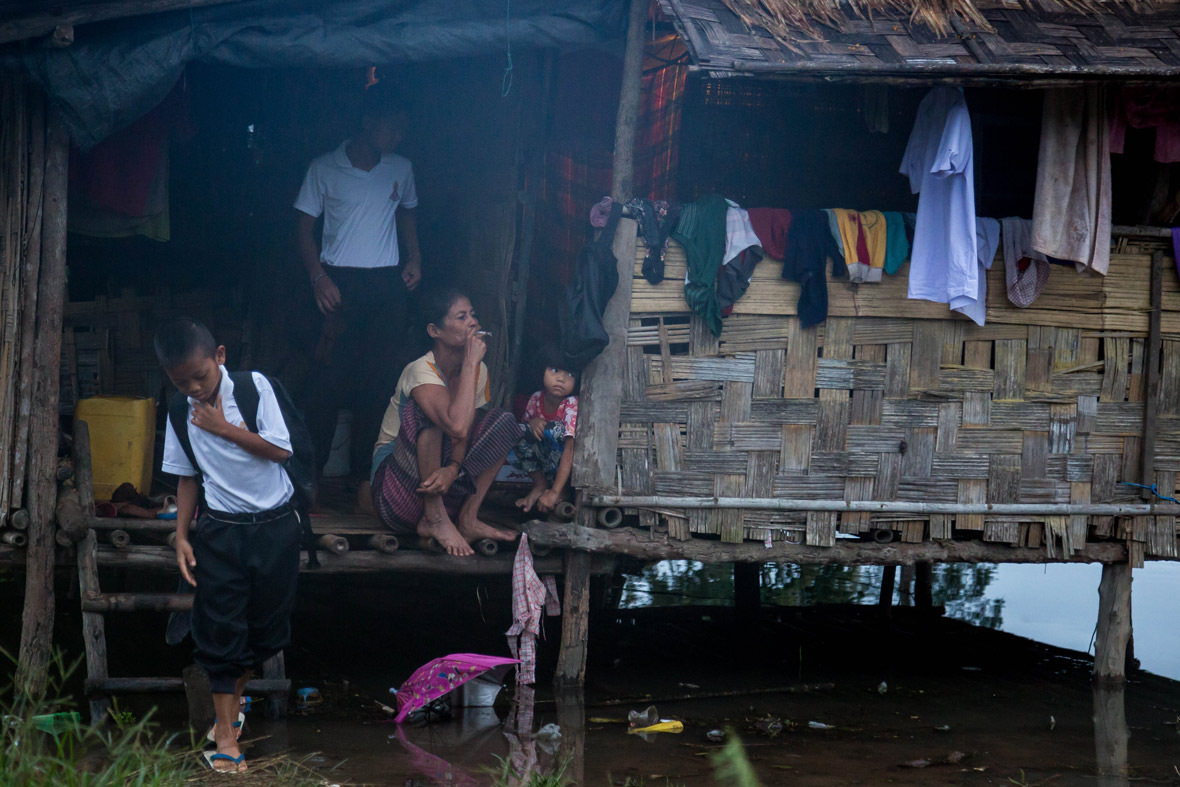
Ye lives with his grandmother and his five siblings in a simple wooden house with a sheet metal roof. It offers minimal protection from the elements, and since it’s not officially registered, it lacks proper plumbing. Water for cooking and drinking has to be fetched every few days from a nearby fountain alongside the river.
Ye’s grandmother works full-time, so he often has to take care of his siblings after school. His parents work in the city and send what money they can every month, but it’s not much. Faced with these harsh realities, Ye sets aside part of the money he makes on weekends to help feed his family.
现在,Ye Te Su 和奶奶、五个兄弟姐妹一起住在一间简陃的木屋里,房顶只是一块简单的金属板。这间木屋只能为他们提供最基本的庇护,并且因为房子没有被正式地登记,屋里也没有安装必要的管路系统。每隔几天,他们就必须到附近的河边喷泉去取做饭和喝水用的水。
他的父母进了城里工作,每个月都尽量给他们寄钱回来。他的祖母也在全职工作,所以 Ye 放学后经常要负责照顾他的弟弟妹妹。面对这些严酷的现实,他周末所努力挣来的钱,一部分也要用来养活他的家人。
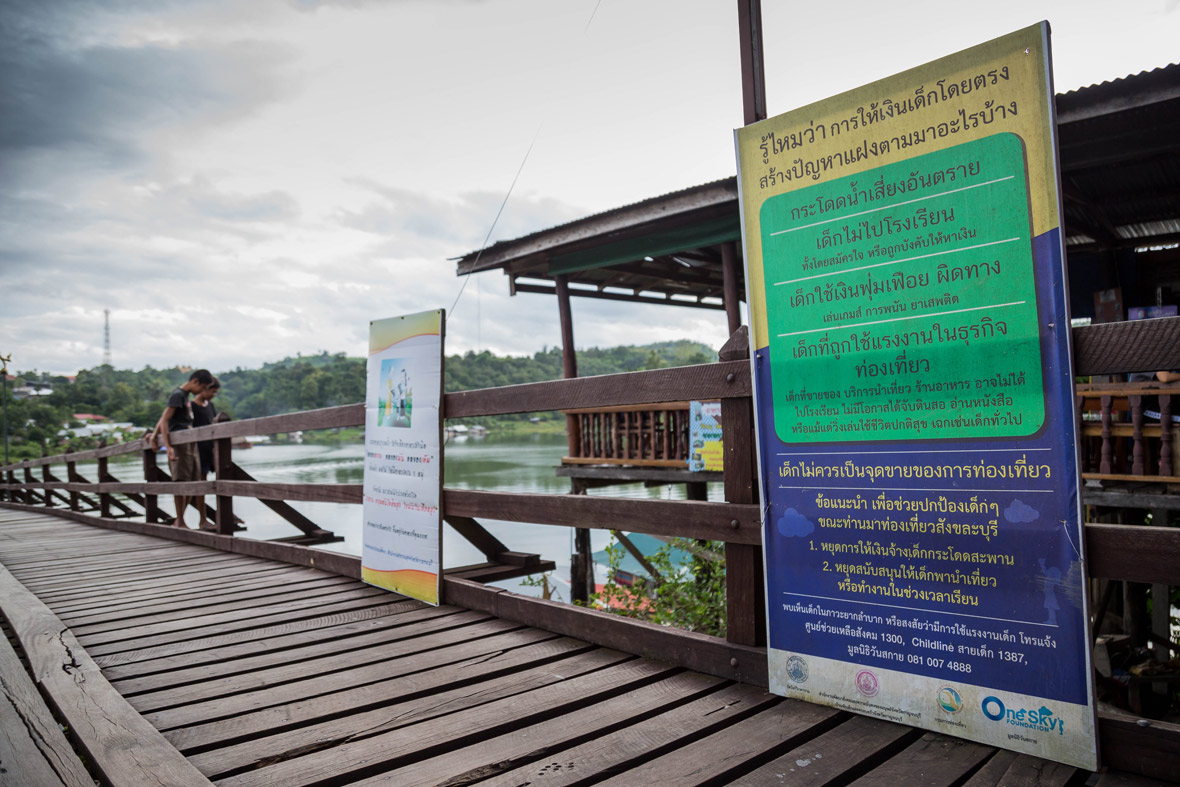
Popular as the diving is, local authorities are strongly opposed to it. They point out that the activity is dangerous, and that paying the young divers encourages them to drop out of school to earn money. Besides, they argue, it’s wrong to use children as a tourist attraction. Signs on the bridge warn people not to give them money.
But for Ye, it’s not so simple. He still goes to class in a school nearby, but weekend diving is an important source of income. There are others like him, young boys facing adult pressures. And as long as the tourists keep coming to Sangkhla Buri, the divers will continue to weigh the risks, and continue to take the leap.
尽量这样的跳水表演很受欢迎,但地方当局对此强烈反对。他们认为这项活动不仅危险,还是在鼓励年轻跳水员辍学赚钱。况且,利用儿童作为观光目的也不太妥当。因此他们在桥上放了一个标志,警告人们不要付钱给这些男孩。
但对 Ye 来说,事情并没有那么简单。他现在正在一所当地学校上课,周末跳水表演那点微薄的收入成为了他家里一项重要的收入来源。而他的情况并非个案,就像许多其他年轻男孩同样面临到这样的困境。但是,只要还有络绎不绝的游客来到 Sangkhla Buri,这些跳水表演员就会继续冒着风险,纵身跃入河中。
